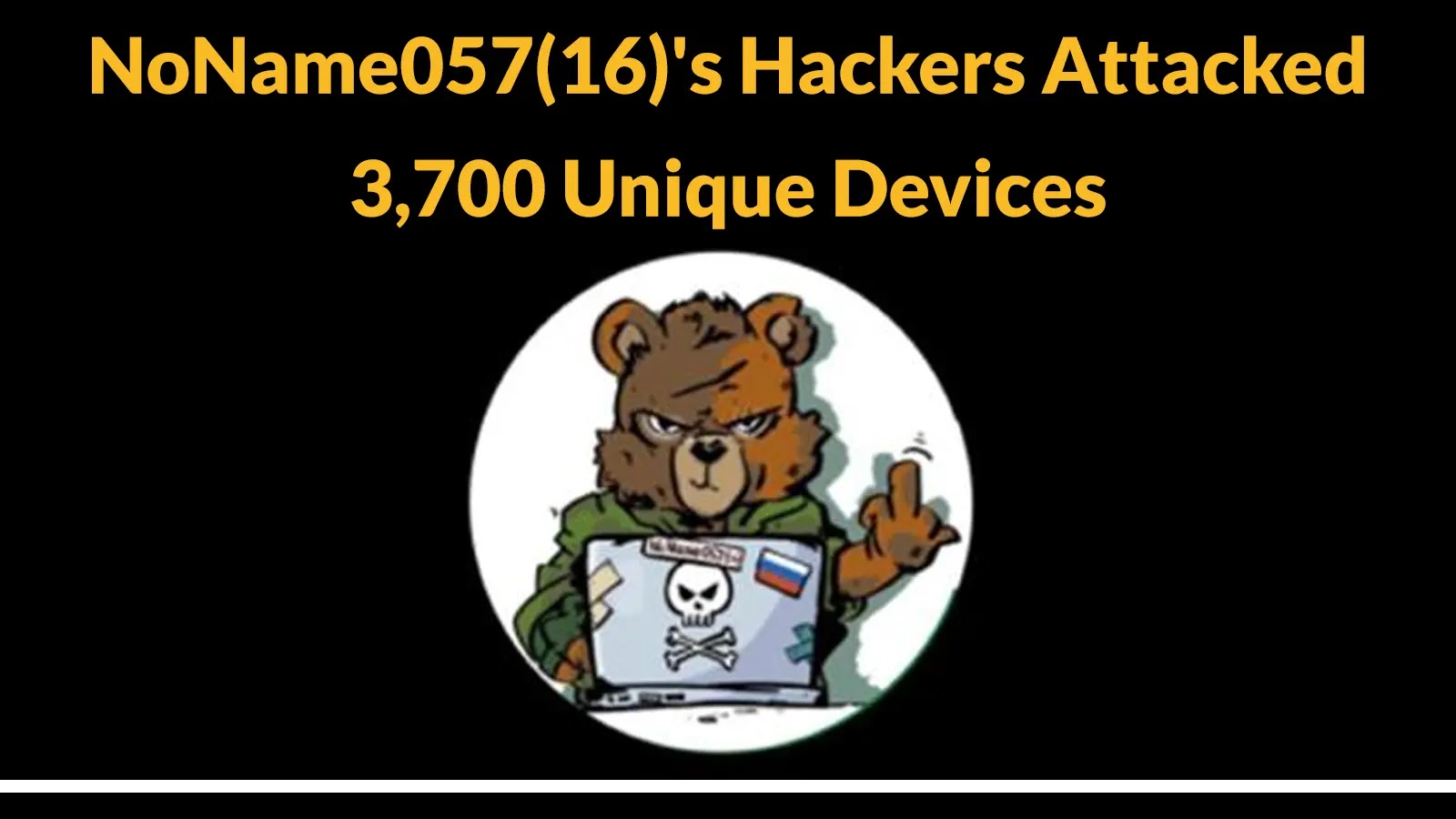
NoName057(16)’s Hackers Attacked 3,700 Unique Devices Over Last Thirteen Months
Unprecedented DDoS Barrage: NoName057(16) Strikes 3,700 Unique Devices
The digital battleground is constant, and understanding the tactics of formidable adversaries is crucial for robust defense. A recent report, published on July 22, 2025, reveals a stark reality: the pro-Russian hacktivist group NoName057(16) has unleashed a staggering campaign of distributed denial-of-service (DDoS) attacks, impacting over 3,700 unique internet-facing hosts over the last thirteen months. This aggressive operational tempo signals a persistent and evolving threat that demands our immediate attention and proactive countermeasures.
Who is NoName057(16)? A Profile of Persistent Cyber Aggression
NoName057(16) first emerged into the cyber threat landscape in March 2022, shortly following Russia’s full-scale invasion of Ukraine. Since then, they have maintained an alarming pace of operations, consistently targeting a wide array of systems. Their emergence signifies a notable shift in the geopolitical cyber conflict, where hacktivist groups play a significant role in disrupting critical infrastructure and services. Their ongoing activity highlights the growing sophistication and dedication of state-sponsored or aligned cyber actors.
The Scope of the DDoS Campaign: 3,700 Targets and Counting
The sheer scale of NoName057(16)’s recent activity is concerning. Their ability to orchestrate DDoS attacks against an average of 3,700 unique devices over a thirteen-month period underscores their resources, coordination, and technical capabilities. DDoS attacks, by their nature, aim to overwhelm target systems with a flood of traffic, rendering them unavailable to legitimate users. These attacks can cripple services, lead to significant financial losses, and erode public trust in online platforms. While specific vulnerabilities exploited in these DDoS campaigns are not detailed in the source, the general principle of DDoS relies on overwhelming legitimate traffic, often leveraging botnets composed of compromised devices.
Tactics and Techniques: Understanding the DDoS Threat
While the detailed technical methodologies employed by NoName057(16) for each of their 3,700 attacks are not publicly cataloged as specific CVEs (as DDoS is an attack methodology rather than a single vulnerability), their consistent success points to effective command-and-control infrastructure and potentially large botnets. Common DDoS attack vectors include:
- Volume-based attacks: Flooding the network layer with massive traffic, such as UDP floods or ICMP floods.
- Protocol attacks: Exploiting weaknesses in Layer 3 and Layer 4 protocols, like SYN floods (affecting server connections) or fragmented packet attacks.
- Application-layer attacks: Targeting specific applications or services with seemingly legitimate but resource-intensive requests, such as HTTP floods or slowloris attacks.
The ongoing nature of NoName057(16)’s activities suggests a dynamic approach, adapting their techniques to bypass existing defenses.
Remediation Actions: Fortifying Defenses Against DDoS Attacks
Proactive defense is paramount when facing persistent threats like NoName057(16). Organizations must adopt a layered security approach to mitigate the impact of DDoS attacks.
- Implement DDoS Mitigation Services:Leverage specialized DDoS mitigation services from cloud providers or dedicated vendors. These services can detect and filter malicious traffic before it reaches your infrastructure.
- Network Hardening:Ensure network devices are configured securely. This includes rate limiting, access control lists (ACLs), and ingress/egress filtering to prevent spoofed packets.
- Content Delivery Networks (CDNs):Utilize CDNs to distribute website content. This helps absorb traffic spikes and provides an additional layer of defense against application-layer DDoS attacks.
- Regular Security Audits and Penetration Testing:Proactively identify and patch vulnerabilities in your infrastructure. This includes regular vulnerability scans and penetration tests to uncover potential weaknesses that could be exploited in a DDoS attack, such as misconfigured firewalls or exposed services.
- Incident Response Plan (IRP):Develop and regularly test a comprehensive IRP specifically for DDoS attacks. This plan should outline roles, responsibilities, communication protocols, and steps to take during and after an attack.
- Monitor Network Traffic:Implement robust network monitoring tools to detect unusual traffic patterns and early warning signs of a DDoS attack. Behavioral analytics can be particularly effective here.
- Bandwidth Provisioning:Ensure your network infrastructure has sufficient bandwidth to handle legitimate traffic surges, making it harder for attackers to overwhelm your systems with relatively smaller attacks.
Tools for DDoS Detection, Scanning, and Mitigation
| Tool Name | Purpose | Link |
|---|---|---|
| Cloudflare DDoS Protection | Comprehensive DDoS mitigation, WAF, CDN | https://www.cloudflare.com/ddos/ |
| Akamai Prolexic | Scalable DDoS protection for enterprises | https://www.akamai.com/products/prolexic |
| Netscout Arbor Edge Defense (AED) | On-premises DDoS defense | https://www.netscout.com/products/ddos-protection/arbor-edge-defense |
| Amazon Route 53 (DNS) | DNS service that can help absorb DNS-based attacks | https://aws.amazon.com/route53/ |
| Wireshark | Network protocol analyzer for detecting suspicious traffic patterns | https://www.wireshark.org/ |
Key Takeaways: The Enduring Threat of NoName057(16)
The sustained campaign by NoName057(16) against 3,700 unique targets over thirteen months is a significant development in the cyber threat landscape. This group’s relentless activity underscores the persistent and evolving nature of hacktivism, particularly in geopolitical conflicts. Organizations must recognize the elevated risk of targeted DDoS attacks and prioritize robust, layered defenses. Proactive investment in DDoS mitigation, network hardening, and comprehensive incident response plans are not merely recommendations; they are essential for maintaining operational resilience in the face of such determined adversaries.





